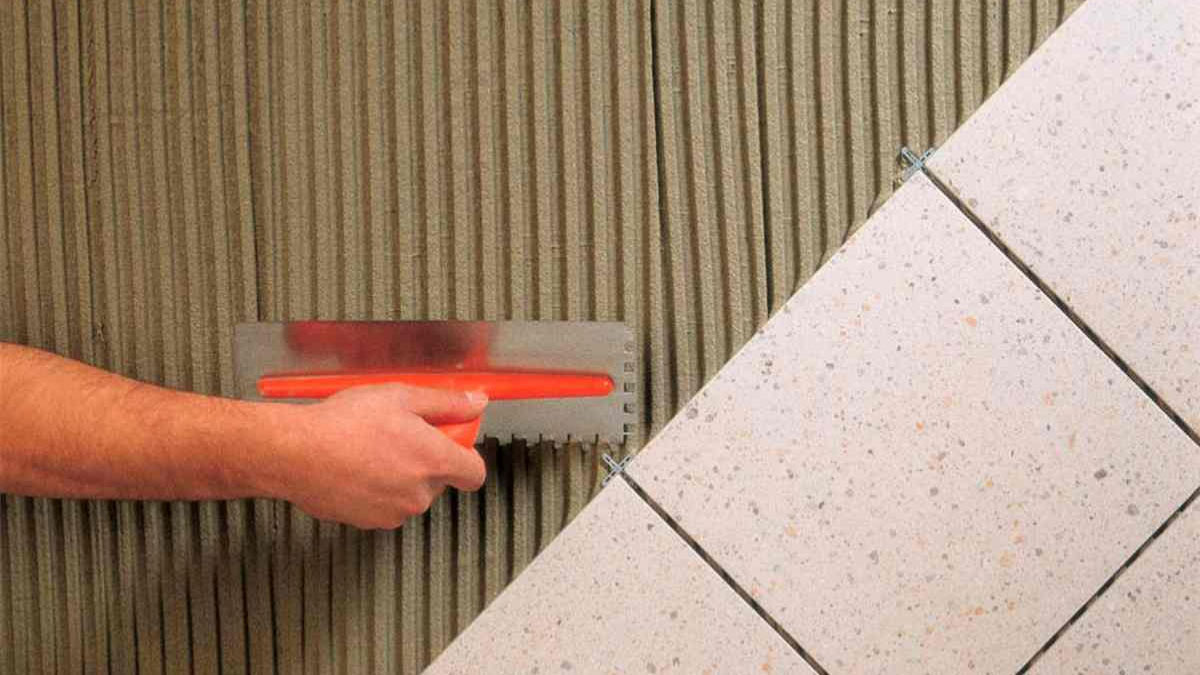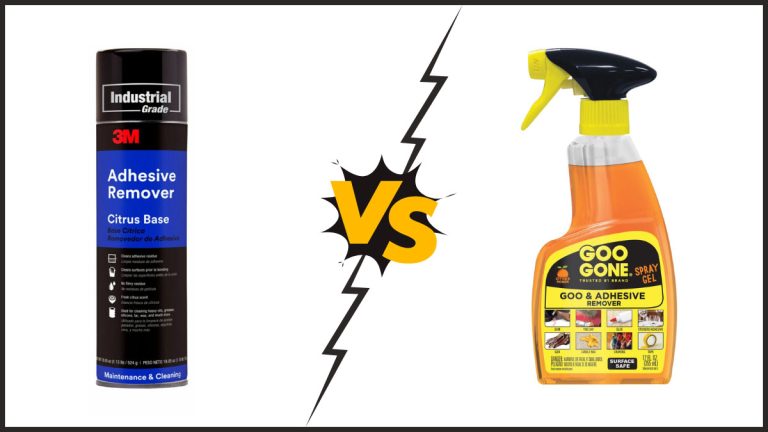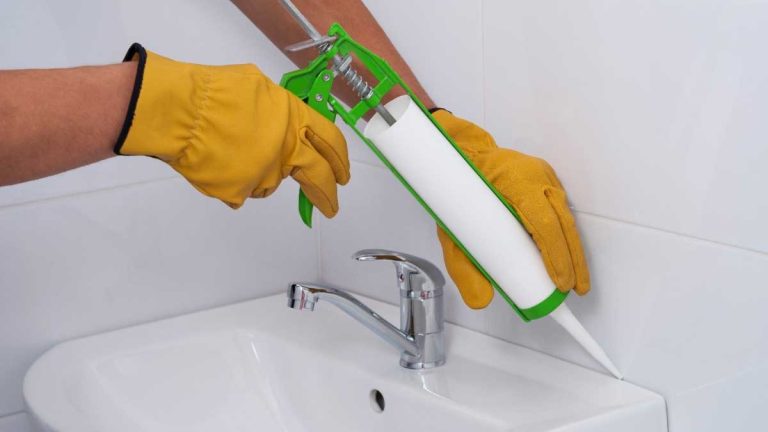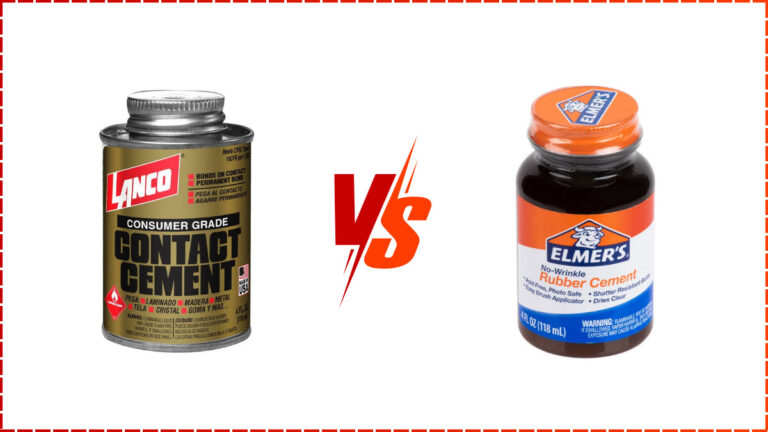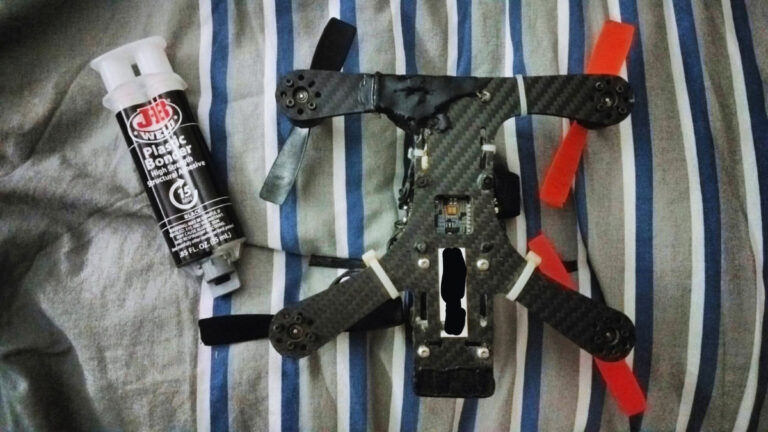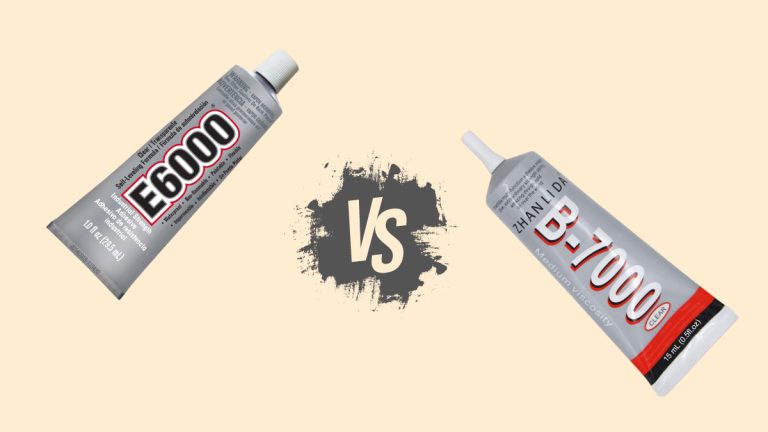What Adhesive Sticks to Ceramic Tile: Best Options for Your Project
When it comes to home improvement projects involving ceramic tiles, choosing the right adhesive can make all the difference. Whether you’re repairing a cracked tile or installing a new backsplash, knowing which adhesive to use ensures a durable and lasting bond. But with so many options on the market, how do you know which one will stick?
Understanding the properties of ceramic tiles and the types of adhesives available helps you make an well-informed choice. Some adhesives work better in high-moisture areas, while others are ideal for heavy-duty applications. By selecting the right adhesive, you’ll not only achieve a professional finish but also save time and money in the long run.
Key Takeaways
- Choosing the Right Adhesive for Ceramic Tiles: Understand the specific properties and ideal applications for different adhesives, such as thinset mortar, tile mastic, and epoxy mortar.
- Factors to Consider: Assess critical factors like removability, durability, heat resistance, and moisture resistance to match the adhesive to your project requirements.
- Proper Surface Preparation: Clean, inspect, and thoroughly dry the surface to ensure a strong and durable bond with the adhesive.
- Adhesive Comparison Tables: Use detailed comparison tables to make well-informed decisions based on bonding strength, drying time, moisture resistance, and ease of use.
- Expert Tips for Installation: Follow guidelines for cleaning, inspection, drying, and uniform application to achieve professional results and long-lasting installations.
Understanding Ceramic Tile Adhesives
Choosing the right adhesive for ceramic tile projects requires an understanding of various adhesive types, their properties, and their suitability for different tasks.
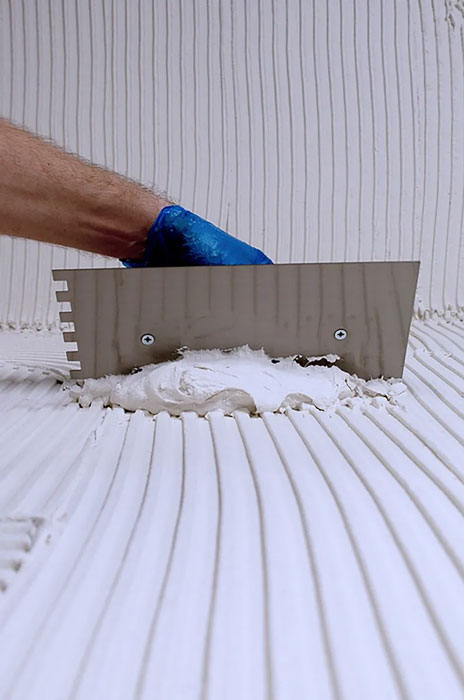
Types of Adhesives
Here are common adhesives you can use on ceramic tiles:
- Command Picture Hanging Strips:
- Ideal for temporary applications.
- Provide strong adhesion while being removable.
- Hot Glue:
- Gorilla hot glue offers strong adhesion.
- Can be removed with heat but might damage grout if applied carelessly.
- Polyurethane Construction Adhesive:
- Clear Gorilla Glue is an example.
- Offers durable bonding but isn’t easily removable.
Factors to Consider
When selecting an adhesive, consider:
- Removability:
- Essential for renters or temporary installations.
- Command Strips excel in this area.
- Durability:
- Necessary for items subject to weight or frequent use.
- Polyurethane adhesives provide superior strength.
- Heat and Moisture Resistance:
- Critical for bathrooms and kitchens.
- Hot glue and polyurethane adhesives generally perform well.
Adhesive Properties
Understanding the properties and applications helps in choosing the right adhesive for a given task. Below is a summary:
| Adhesive Type | Strength | Removability | Heat Resistance | Moisture Resistance | Example |
|---|---|---|---|---|---|
| Command Strips | Moderate | High | Low | Low | Command Picture Hanging Strips |
| Hot Glue | High | Moderate | Low | Moderate | Gorilla Hot Glue |
| Polyurethane | Very High | Low | High | High | Clear Gorilla Glue |
Action Point
Evaluate your project requirements, compare adhesive properties, and choose the adhesive that aligns best with your needs. This ensures a professional result while saving time and money.
Adhering to these guidelines will lead to a successful project, whether you’re making temporary adjustments or establishing permanent fixtures.
Types of Adhesives for Ceramic Tile
Choosing the right adhesive is essential for a successful ceramic tile installation. This section explores the most commonly used adhesives, detailing their pros, cons, and ideal applications.
Thinset Mortar
Thinset Mortar is the most popular choice for ceramic tile installations. It’s available in two varieties: standard (a dry powder mixed with water) and premixed (ready to use).
- Pros:
- Forms a strong bond, ensuring tiles stay securely in place.
- Resistant to moisture and heat, making it suitable for showers, countertops, and outdoor areas.
- Compatible with various materials, like ceramic, natural stone, and glass.
- Affordable and relatively straightforward to use.
- Cons:
- Requires a latex additive to prevent cracks and enhance bond strength.
- Takes 24-48 hours to cure, with vertical tiles needing additional securing to avoid slipping.
- Difficult to remove once set.
Tile Mastic
Tile Mastic is an adhesive used frequently for wall tile installations. It’s a ready-to-use, bucket-stored adhesive with specific applications.
- Advantages:
- Ready to use straight from the container, simplifying the application process.
- Dries quickly, reducing the waiting time before grouting.
- Ideal for dry areas like kitchen backsplashes and bathroom walls.
- Disadvantages:
- Not recommended for high-moisture areas; it lacks water resistance.
- Tends to lose bond strength in environments with prolonged exposure to heat.
- Limited use with heavy or large-format tiles.
Epoxy Mortar
Epoxy Mortar stands out for its superior bonding capabilities and durability. It’s a two-part system (resin and hardener) commonly used in demanding installations.
- Pros:
- Exceptionally strong bond, ideal for commercial settings or heavy-duty applications.
- Resistant to moisture, chemicals, and temperature fluctuations.
- Suitable for various substrates, including cement board, concrete, and plywood.
- Cons:
- More expensive than other adhesives, reflecting its high performance.
- Requires careful mixing and application, demanding a higher skill level.
- Limited working time; once mixed, it hardens quickly, necessitating efficient work.
Use the following table to compare these adhesives effectively:
| Adhesive Type | Strength | Moisture Resistance | Drying Time | Suitable Areas |
|---|---|---|---|---|
| Thinset Mortar | High | High | 24-48 hrs | Showers, countertops, outdoor |
| Tile Mastic | Moderate | Low | Fast (several hrs) | Backsplashes, bathroom walls |
| Epoxy Mortar | Very High | Very High | Short (fast cure) | Commercial, heavy-duty areas |
When selecting an adhesive, consider the environment and the specific requirements of your project. By understanding these adhesives, you can ensure a durable and professional finish for your ceramic tile installation.
Pros and Cons of Each Adhesive
Choosing the right adhesive for ceramic tiles is crucial for a successful installation. Each adhesive type offers unique benefits and limitations. Understanding these will help you make an well-informed choice.
Thinset Mortar
Thinset Mortar is a popular adhesive for ceramic tiles due to its strength and versatility.
Pros:
- Strong Bond: Once dried, thinset mortar secures tiles firmly.
- Versatility: Suitable for ceramic, natural stone, and glass tiles.
- Moisture and Heat Resistance: Ideal for areas like showers, countertops, and outdoor applications.
- Affordability and Ease of Use: Cost-effective and user-friendly, perfect for DIY projects.
Cons:
- Drying Time: Takes 24–48 hours to dry; vertical tiles may slip during curing if not secured.
- Removal Difficulty: Extremely challenging to remove, complicating tile replacement.
Tile Mastic
Tile Mastic is a pre-mixed adhesive known for its ease of use and quick application.
Pros:
- Quick Drying: Dries faster than thinset, reducing installation time.
- Easy Application: Ready-to-use formula simplifies the process.
- Strong Initial Tack: Holds tiles in place immediately, minimizing slippage.
Cons:
- Moisture Sensitivity: Not suitable for high-moisture areas like showers.
- Limited Heat Resistance: Less durable under high heat conditions.
- Less Versatile: Better suited for light to medium-duty applications.
Epoxy Mortar
Epoxy Mortar stands out for its exceptional bonding strength and durability.
Pros:
- Exceptional Bond: Provides a superior bond, ideal for heavy-duty applications.
- Durability: Highly resistant to chemicals, moisture, and heat.
- Versatile Applications: Perfect for both residential and commercial environments.
Cons:
- High Cost: More expensive compared to other adhesives.
- Application Complexity: Requires precise mixing and application.
- Limited Working Time: Short working time before it sets, demanding quick, efficient use.
| Attribute | Thinset Mortar | Tile Mastic | Epoxy Mortar |
|---|---|---|---|
| Bonding Strength | Strong | Moderate | Exceptional |
| Drying/Curing Time | 24–48 hours | Quick | Short working time |
| Moisture Resistance | High | Low | High |
| Heat Resistance | High | Low | High |
| Ease of Use | Moderate | High | Low |
| Cost | Affordable | Moderate | High |
| Removal Difficulty | High | Low | High |
Understand these attributes to choose the optimal adhesive for your ceramic tile project.
Choosing the Right Adhesive for Specific Applications
When installing ceramic tile, selecting the appropriate adhesive for your specific application ensures durability and longevity. Here, we’ll unpack the best options for floors, walls, backsplashes, and outdoor projects.
Floors
Thinset Tile Mortar:
Thinset mortar is the go-to choice for tile flooring.
-
Pros:
- Creates a strong, long-lasting bond.
- Resistant to moisture and heat, perfect for high-traffic wet areas like bathrooms and kitchens.
- Compatible with ceramic, natural stone, and glass tiles.
-
Cons:
- Requires 24-48 hours to dry, necessitating patience for proper curing.
- Cannot be saved once mixed, leading to potential waste.
Walls and Backsplashes
For vertical applications like walls and backsplashes, you need an adhesive that prevents tile slippage.
Tile Mastic:
Tile mastic offers greater ease of use for walls and backsplashes.
-
Pros:
- Easy to apply, allowing for quick adjustments.
- Dries faster than mortar, reducing installation time.
- Ideal for dry areas like kitchen backsplashes and interior walls.
-
Cons:
- Not suitable for high-moisture environments, limiting its use in bathrooms and other wet areas.
- Weaker bond compared to thinset, making it less ideal for heavy tiles.
Outdoor Projects
Outdoor projects require adhesives that can withstand the elements.
Epoxy Mortar:
Epoxy mortar is exceptionally durable and versatile for outdoor use.
-
Pros:
- Superior bonding strength, capable of handling heavy loads and extreme conditions.
- Highly resistant to moisture and temperature fluctuations.
-
Cons:
- More expensive than other adhesives, impacting your project budget.
- Requires careful mixing and application, often needing professional handling.
Polyurethane Construction Adhesive:
For less demanding outdoor tasks, polyurethane construction adhesive is a reliable option.
-
Pros:
- Strong bond with good flexibility, accommodating slight shifts due to outdoor temperature changes.
- Resistant to water and can adhere to a variety of substrates.
-
Cons:
- Takes longer to cure, necessitating proper planning.
- Can be difficult to remove if adjustments are needed after curing.
Adhesives Comparison Table
To help you choose the right adhesive, here’s a detailed comparison of these options:
| Adhesive Type | Ideal Application | Pros | Cons |
|---|---|---|---|
| Thinset Tile Mortar | Floors | Strong bond, moisture-resistant, heat-resistant | Long drying time, unused mix is waste |
| Tile Mastic | Walls and Backsplashes | Easy to apply, quick drying | Not suitable for high-moisture areas, weaker bond |
| Epoxy Mortar | Heavy-duty & Outdoors | Exceptional bonding, moisture-resistant, temperature-resistant | Expensive, requires careful application |
| Polyurethane Construction Adhesive | Light Outdoor | Strong yet flexible, good for various substrates | Long curing time, difficult to adjust post-curing |
By understanding the specific attributes of each adhesive, you can confidently select the best option for your ceramic tile project. Prioritize application suitability and environmental conditions to ensure a professional and durable finish.
Preparing the Surface for Adhesive Application
Importance of Surface Preparation
Proper surface preparation ensures a strong and durable bond between the ceramic tile and the adhesive. Skipping this crucial step can lead to adhesion failures, reducing the longevity of your installation.
Steps for Surface Preparation
- Cleaning the Surface:
- Use a mixture of water and mild detergent to scrub the tile.
- Remove all dirt, grease, and grime.
- Rinse with clean water and dry thoroughly.
- Inspecting for Damage:
- Check for cracks or damage on the tile surface.
- Replace any broken tiles before proceeding.
- Smoothing the Surface:
- Sand any rough areas with fine-grit sandpaper.
- Ensure a uniform, smooth surface for better adhesive contact.
- Checking for Residue:
- Ensure no soap or detergent residue remains.
- Clean again if necessary.
- Drying the Surface:
- Allow tiles to air dry completely.
- Use a cloth to speed up the process if needed.
Importance of Dryness
A dry surface is critical for optimal adhesion. Moisture can interfere with the bonding process, weakening the adhesive. Use a fan or heater in damp conditions to accelerate drying.
Tools for Preparation
- Scrub brush for cleaning
- Mild detergent
- Sandpaper, fine-grit
- Clean cloths for drying
- Clean the surface thoroughly
- Inspect and repair damage
- Smooth and dry the surface completely
Thorough preparation yields better adhesion results, enhancing the durability and appearance of your ceramic tile installations.
Expert Tips for Successful Tile Installation
Choosing the right adhesive is vital for successfully installing ceramic tiles. Various adhesives cater to different needs and preferences. The following tips will guide you in ensuring a strong and durable installation.
Selecting the Right Adhesive
Command Picture Hanging Strips
- Type: Temporary adhesive
- Pros: Removable, no damage to tile
- Cons: Limited weight capacity
Command Picture Hanging Strips work best for renters or anyone looking for a temporary solution. These strips allow for easy removal without damaging the tile, making them ideal for lightweight items.
Gorilla Hot Glue
- Type: Hot-melt adhesive
- Pros: Strong bond
- Cons: Risk of grout damage, not suitable for polished tiles
Gorilla hot glue offers exceptional adhesion but requires heating for removal. This adhesive works well on textured tiles but may not adhere well to polished or glass-finish tiles.
Polyurethane Adhesives
- Type: Urethane-based adhesive
- Pros: Strong, versatile
- Cons: Longer curing time
Polyurethane adhesives provide robust bonding on various surfaces, including ceramic tile. These adhesives are effective for long-term installations but need thorough surface preparation and ample curing time.
Application Tips for Adhesives
- Clean Surface: Ensure the tile surface is free from dust, grease, and residue. Use a mild detergent and a scrub brush to clean the area.
- Inspect and Repair: Check for any damage, cracks, or uneven areas on the tiles. Repair these issues to ensure a smooth installation.
- Dry Surface: Make sure the surface is completely dry, as moisture can weaken the adhesive bond.
- Apply Adhesive Evenly: Spread the adhesive uniformly across the tile surface to avoid gaps and weak spots.
- Press Firmly: Press the tile firmly into place to ensure maximum contact with the adhesive.
Comparison Table of Adhesives
| Adhesive Type | Bonding Strength | Drying Time | Moisture Resistance | Ease of Use | Removal Difficulty |
|---|---|---|---|---|---|
| Command Picture Hanging Strips | Medium | Immediate | Low | High | Easy |
| Gorilla Hot Glue | High | Quick | Medium | Medium | Medium |
| Polyurethane Adhesives | Very High | Slow | High | Low | Difficult |
Surface Preparation Steps
- Cleaning: Use a mild detergent and water to wash the tile surface. Dry thoroughly with a clean cloth.
- Inspection: Look for cracks, chips, or uneven areas. Smooth these out using sandpaper.
- Residue Check: Ensure there’s no left-over residue from previous installations. Use a scraper if needed.
- Surface Drying: Confirm that the surface is completely dry before applying any adhesive.
Action Point
Choose the correct adhesive for your specific project needs, prepare the surface properly, and follow recommended application techniques to achieve a professional finish.
Conclusion
Choosing the right adhesive for your ceramic tile project is crucial for achieving a professional and durable finish. By understanding the properties of ceramic tiles and the various adhesives available, you can make an well-informed choice that suits your specific needs. Whether you’re working on floors, walls, backsplashes, or outdoor projects, selecting the appropriate adhesive will save you time and money while ensuring a strong bond.
Don’t forget the importance of thorough surface preparation. Cleaning, inspecting, and drying the surface are essential steps that enhance the durability and appearance of your tile installation. Following these guidelines and expert tips will help you achieve successful outcomes for both temporary adjustments and permanent installations.
Frequently Asked Questions
What is the best adhesive for ceramic tile installations in high-moisture areas?
Thinset Mortar is recommended for high-moisture areas due to its strong bond and moisture-resistant properties. It’s suitable for showers, bathroom floors, and other wet locations.
Can I use Tile Mastic for kitchen backsplashes?
Yes, Tile Mastic is ideal for kitchen backsplashes. It offers ease of use and quick drying time, but avoid using it in high-moisture areas as it may not hold up well.
Is Epoxy Mortar a good choice for outdoor tile projects?
Epoxy Mortar is excellent for outdoor tile projects because of its exceptional bonding strength and durability. However, it is more expensive and requires careful application.
How do I prepare the surface for ceramic tile installation?
Preparation steps include cleaning the surface with a mild detergent, inspecting for damage, smoothing rough areas with sandpaper, checking for residue, and ensuring the surface is completely dry.
Can Gorilla Glue be used for ceramic tiles?
Gorilla Glue can be used for smaller ceramic repairs due to its strong adhesion. However, it may not be the best choice for extensive tile installations.
What is the best adhesive for temporary ceramic tile adjustments?
Command Picture Hanging Strips are suitable for temporary ceramic tile adjustments. They are easy to remove without leaving residue or damaging the tiles.
Should I use polyurethane construction adhesive for ceramic tiles?
Polyurethane construction adhesive is ideal for durable, long-term ceramic tile installations. It offers strong adhesion and is resistant to heat and moisture.
Are Epoxy adhesives suitable for heavy-duty ceramic applications?
Yes, Epoxy adhesives are perfect for heavy-duty ceramic applications due to their high bonding strength and durability, although they are typically more expensive and require precise application techniques.
How important is a dry surface for tile adhesive application?
A completely dry surface is crucial for a strong adhesive bond. Moisture can weaken the bond, making it essential to ensure the surface is dry before applying adhesive.
What tools are recommended for surface preparation?
Recommended tools for surface preparation include scrub brushes, sandpaper, and clean cloths. These help in cleaning, smoothing, and drying the surface for optimal adhesive bonding.

